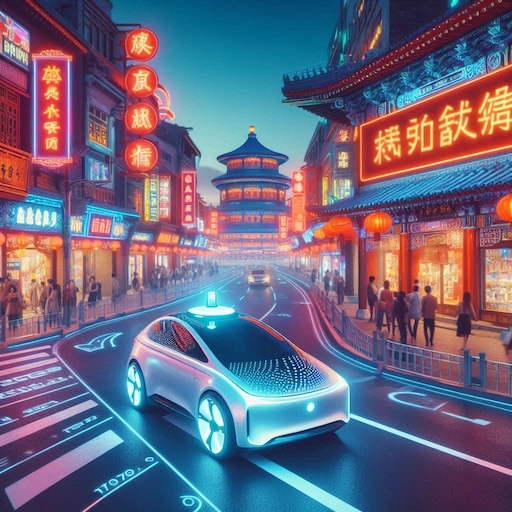Now that claims and counter claims about advances in foundational AI appear to be dying down, it turns into extra fascinating to have a look at the subsequent wave – AI purposes in key markets. Determining what is absolutely occurring right here presents its personal issues. Advertising and analyst literature nonetheless tasks unbounded promise (now dialed again a bit), although some surveys counsel that enterprise adoption for enterprise purposes continues to be aspirational quite than mainstream. I now select to look solely at moderately unbiased utility surveys (right here automotive), for instance as reported in journals of peer reviewed literature.

Why a China focus?
The Chinese language auto trade is the largest on the planet by a large margin as measured by unit manufacturing, which by itself is a reasonably fascinating statistic. That truth may be important solely inside China if it weren’t for the very fact their auto gross sales are additionally beginning to develop in southeast Asia. Whereas at present accounting for much less that 10% of unit gross sales, Chinese language OEMs are investing in factories throughout that area, increasing additionally in Brazil and now speaking about Mexico. Individually, Volvo, now owned by a Chinese language holding group, are selling their EX30 and Polestar automobiles in Europe and the US. Whether or not or not these automobiles will clear US regulatory hurdles, it appears like Chinese language automakers see alternative to broaden outdoors Asia.
The extra necessary indicator for my function is that Chinese language analysis in ADAS and autonomy is accelerating quickly, little question motivated by tariffs/embargos. That is notably apparent in automotive AI as judged by this paper from the China Automotive Know-how and Analysis Middle in Tianjin. Which in my opinion makes this space very fascinating to observe.
Energetic manufacturing and R&D
Augmented actuality (AR) heads-up shows (HUD) are one utility area that appears to be monitoring intently with Western R&D. There are a number of gamers right here. Full-featured options rely upon collaboration between the driving force monitoring system (DMS)/pupil monitoring, ahead wanting cameras, panorama notion (segmenting street areas, figuring out close by automobiles, pedestrians) and AR picture rendering.
Subsets of this area are driver monitoring methods and occupant monitoring methods (OMS). Right here DMS checks for closed or closing eyes or irregular pose (is the driving force slumped over or to 1 aspect?) to detect fatigue. OMS checks that you simply didn’t depart a baby, an aged individual or a pet within the automobile. Right here additionally there are a number of lively deployments. Analysis right here is ensemble (a number of coupled) studying methods.
ADAS is already routine in China and BYD is actively testing L3 ADAS in Shenzen. This program began fairly not too long ago, so presumably will take time to construct an satisfactory coaching database. Then once more, the Chinese language appear considerably resigned to exterior monitoring so could also be extra open to exterior strategies to help car-based AI. Analysis right here is also working with coupled methods together with reinforcement studying, to foretell car trajectory and for lane preserving.
Fingerprint and facial recognition are already out there to unlock and begin some fashions, regardless of the occasional PR catastrophe. Analysis continues for dealing with difficult illumination circumstances which may cut back accuracy for face-based recognition. Right here once more analysis is contemplating ensemble-based methods, presumably to acknowledge extra advanced facial traits than may be captured in a single coaching set. additionally factoring in physiological sensing for the driving force. That is an intriguing video evaluation of the brand new Xpeng G3 mannequin, mentioning amongst different issues facial recognition and physiological monitoring.
In cockpit management, hand gesture recognition as an alternate technique of management is already out there in some Chinese language automobiles. Tencent has introduced a mobility answer (I feel voice-based) constructed on LLMs. Whereas there was an explosion in choices on this area, I might think about that can settle pretty shortly to some survivors resembling TenCent.
To spherical out in-cabin automation, 360o view monitoring and blind spot detection at the moment are commonplace and advancing, for instance on the lookout for parking line markers and low obstacles (youngster, canine, children bike).
Acknowledged challenges
The paper lists a number of challenges in execution and in adoption. A few of these are routine, others are fascinating both for a unique perception or for China-unique views. There’s recognition that on-board AI might not be ample for advanced duties and can want exterior (cloud) assist. Which raises considerations about privateness and safety. Chinese language automobile patrons fear about this too in accordance with the paper.
The authors additionally name out basic low enthusiasm for AI-based options amongst Chinese language drivers. They attribute this partly to studying curve but in addition partly to unpredictable high quality in these methods. I feel the argument right here is that AI could also be a fantastic gross sales software within the showroom however might even see low utilization in observe.
One drawback they name out is weak linkage between {hardware} and software program growth groups, the place they are saying in China collaborative {hardware}/software program growth nonetheless lags different nations.
Lastly, the Chinese language are wrestling with coverage and regulatory considerations, simply as we’re. Even in that nation there aren’t any straightforward methods to sure elements like legal responsibility, privateness and safety.
Takeaways
It appears clear in present deployment alone that Chinese language auto makers are maintaining with different automakers, within the West and elsewhere in Asia. In the meantime analysis additionally appears to be monitoring analysis outdoors China. Whether or not we’ll see any of those automobiles within the US is now extra a political query than a technical query, particularly given the very low worth tags on supply. I’m certain there can be high quality issues, although our personal automakers are hardly innocent in that division.
Value persevering with to observe.
Share this put up through:


